by Brenda S. Cox
“Now,” said Mrs. Rushworth, “we are coming to the chapel, which properly we ought to enter from above, and look down upon; but as we are quite among friends, I will take you in this way, if you will excuse me.”–Mansfield Park, chapter 9
I have wanted to see the chapel at Stoneleigh Abbey ever since I learned that it was probably the model for the Sotherton chapel in Mansfield Park. A key scene takes place there, where Mary Crawford shows her disdain for the clergy, then discovers that Edmund Bertram plans to become a clergyman. Jane Austen visited Stoneleigh Abbey in 1806 with her mother and sister, shortly after her cousin, Rev. Thomas Leigh, inherited it. Mansfield Park was written in 1811-1813, and published in 1814.

A chapel was any place of worship besides a parish church. They could be small and simple, or huge and grand. St. George’s Chapel at Windsor Castle, for example, is far larger and more ornate than most churches. But the Stoneleigh Chapel is small.
I finally got to visit Stoneleigh Abbey on the JASNA Summer Tour this year. That was a highlight of the tour for me. I’ll be posting on Jane Austen’s World about the whole abbey. But today, let’s just visit the chapel, and compare it to what Austen said in Mansfield Park about the chapel at Sotherton, Mr. Rushworth’s estate. First, though, how similar was the Sotherton estate to the Leighs’ estate at Stoneleigh Abbey? We know that Mr. Rushworth’s income was £12,000 a year, £2,000 more than Mr. Darcy’s income in Pride and Prejudice. Mr. Rushworth is the wealthiest person whose income is given in Austen’s novels. However, the income of the Leighs of Stoneleigh Abbey was even higher, at £17,000 a year, which Victoria Huxley says was “perhaps the annual equivalent of a million pounds in today’s values” (p. 9). So Stoneleigh Abbey was an even wealthier version of Sotherton.

In Mansfield Park, chapter 9, Mrs. Rushworth is taking the Bertrams, Crawfords, and Fanny Price on a tour of Sotherton. Maria Bertram is engaged to Mrs. Rushworth’s son, Mr. Rushworth, who is wealthy but not very bright. Henry and Mary Crawford are visitors to their half-sister, Mrs. Grant, at the Mansfield Park parsonage, where Dr. Grant is rector. Maria Bertram is attracted to Henry (even though she’s engaged, he keeps flirting with her), and her brother Edmund is attracted to Mary. Mr. Rushworth has invited them all to see his grand estate at Sotherton, and Henry is supposed to give him advice on improving the estate, especially the grounds around it. (See Jane Austen’s Rich(er) Leigh Family Connections at Adlestrop and Stoneleigh Abbey, and Jane Austen’s Leigh Family: The Stories Behind the Stories, for more on that inheritance, and on the improvements that her cousin made to Adlestrop and Stoneleigh, with the help of Humphrey Repton, who is mentioned in Mansfield Park.) But first they are touring the house.

As they had approached the house earlier, “even Fanny had something to say in admiration. . . . Her eye was eagerly taking in everything within her reach; and after being at some pains to get a view of the house, [she observed] that “it was a sort of building which she could not look at but with respect.”
Once they began their tour, “Miss Crawford, who had seen scores of great houses, and cared for none of them, had only the appearance of civilly listening, while Fanny, to whom everything was almost as interesting as it was new, attended with unaffected earnestness to all that Mrs. Rushworth could relate of the family in former times, its rise and grandeur, regal visits and loyal efforts, delighted to connect anything with history already known, or warm her imagination with scenes of the past.”
Fanny Price is loving the tour, learning every bit she can, and imagining great scenes from the past. Sophisticated Mary Crawford, however, is bored. Their values are very different. Mary cares only for the present.

When they enter the chapel, though, Fanny is disappointed. Did Austen feel that way about the Stoneleigh Abbey chapel?
They entered. Fanny’s imagination had prepared her for something grander than a mere spacious, oblong room, fitted up for the purpose of devotion: with nothing more striking or more solemn than the profusion of mahogany, and the crimson velvet cushions appearing over the ledge of the family gallery above.

“I am disappointed,” said [Fanny], in a low voice, to Edmund. “This is not my idea of a chapel. There is nothing awful here, nothing melancholy, nothing grand. Here are no aisles, no arches, no inscriptions, no banners. No banners, cousin, to be ‘blown by the night wind of heaven.’ No signs that a ‘Scottish monarch sleeps below.'”
“You forget, Fanny, how lately all this has been built, and for how confined a purpose, compared with the old chapels of castles and monasteries. It was only for the private use of the family. They have been buried, I suppose, in the parish church. There you must look for the banners and the achievements.”
“It was foolish of me not to think of all that; but I am disappointed.”


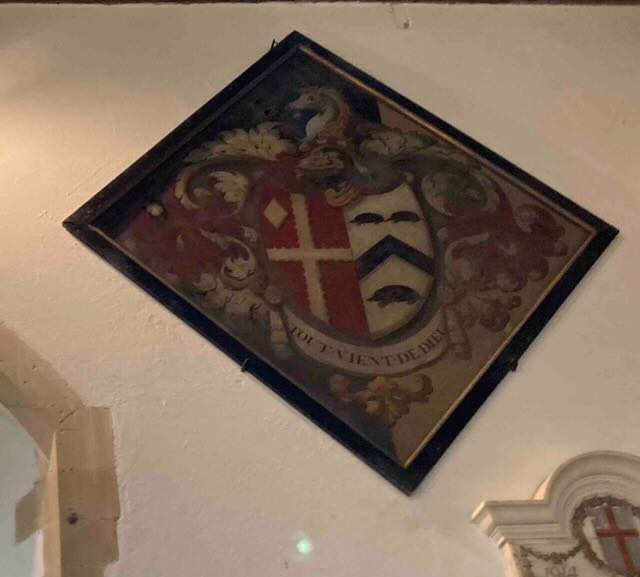
“Mrs. Rushworth began her relation. ‘This chapel was fitted up as you see it, in James the Second’s time [1685-1688]. Before that period, as I understand, the pews were only wainscot; and there is some reason to think that the linings and cushions of the pulpit and family seat were only purple cloth; but this is not quite certain.'”
Since the West Wing of Stoneleigh Abbey was not built until the 1720s, so the chapel (in that wing) is somewhat later than the Sotherton chapel.


Mrs. Rushworth continues, “It is a handsome chapel, and was formerly in constant use both morning and evening. Prayers were always read in it by the domestic chaplain, within the memory of many; but the late Mr. Rushworth left it off.”
Large country estates, like the Rushworths’ Sotherton and Stoneleigh Abbey, often had their own chapels and chaplains. The Book of Common Prayer includes morning and evening prayer, services intended for daily use. The chaplain would read the prayers and Scriptures for that day in the calendar. Austen’s family was in the habit of reading daily prayers together, morning and evening, in their home. At Stoneleigh, the setting was more formal, in the chapel.
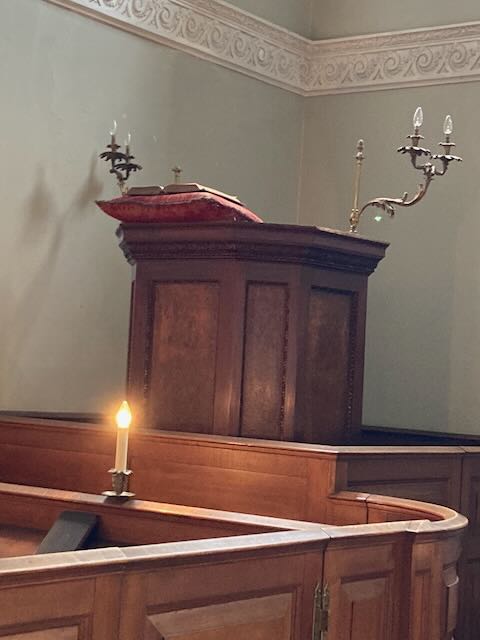
Mrs. Austen wrote, in a letter during their visit to Stoneleigh Abbey, “At nine in the morning we say our prayers in a handsome chapel, of which the pulpit, &c. &c., is now hung with black.” Caroline Austen, Jane’s niece, wrote about a visit she made to Stoneleigh Abbey in later years. She said, “There was a chapel, and Mr. Leigh read prayers in it twice a day–in the morning at 9 o’clock.”
Mary Crawford thinks stopping family prayers is an “improvement.” Fanny disagrees:
“It is a pity,” cried Fanny, “that the custom should have been discontinued. It was a valuable part of former times. There is something in a chapel and chaplain so much in character with a great house, with one’s ideas of what such a household should be! A whole family assembling regularly for the purpose of prayer is fine!”
“Very fine indeed,” said Miss Crawford, laughing. “It must do the heads of the family a great deal of good to force all the poor housemaids and footmen to leave business and pleasure, and say their prayers here twice a day, while they are inventing excuses themselves for staying away.”
“That is hardly Fanny’s idea of a family assembling,” said Edmund. “If the master and mistress do not attend themselves, there must be more harm than good in the custom.”


Obviously, at Stoneleigh Abbey, the family attended daily prayers. Rev. Thomas Leigh, the owner, led the prayers, and his cousins the Austens all attended when they were visiting. Presumably all the servants attended as well. I imagine that Jane Austen felt, like Fanny Price, that “A whole family assembling regularly for the purpose of prayer is fine!”
A discussion follows, where Mary Crawford says, “Everybody likes to go their own way—to chuse their own time and manner of devotion. The obligation of attendance, the formality, the restraint, the length of time—altogether it is a formidable thing, and what nobody likes.” She says the young ladies of the household would only enjoy attending if the “poor chaplain” was “worth looking at,” but she imagines that “in those days, parsons were very inferior even to what they are now.”
Edmund is angry at this slur, but kindly allows for human nature, saying “We must all feel at times the difficulty of fixing our thoughts as we could wish; but if you are supposing it a frequent thing, that is to say, a weakness grown into a habit from neglect, what could be expected from the private devotions of such persons? Do you think the minds which are suffered, which are indulged in wanderings in a chapel, would be more collected in a closet?”
Mary responds, “Yes, very likely. They would have two chances at least in their favour. There would be less to distract the attention from without, and it would not be tried so long.”
Edmund says, “The mind which does not struggle against itself under one circumstance, would find objects to distract it in the other, I believe; and the influence of the place and of example may often rouse better feelings than are begun with. The greater length of the service, however, I admit to be sometimes too hard a stretch upon the mind. One wishes it were not so; but I have not yet left Oxford long enough to forget what chapel prayers are.”

Julia called Mr. Crawford’s attention to her sister . . . “Do look at Mr. Rushworth and Maria, standing side by side, exactly as if the ceremony [their wedding] were going to be performed. Have not they completely the air of it?”
Mr. Crawford smiled his acquiescence, and stepping forward to Maria, said, in a voice which she only could hear, “I do not like to see Miss Bertram so near the altar.”
Julia adds that if they only had a proper marriage license, and if Edmund were already ordained, they could have the wedding right then. Mary is shocked to realize that Edmund is going to be a clergyman, and says, “If I had known this before, I would have spoken of the cloth with more respect.”
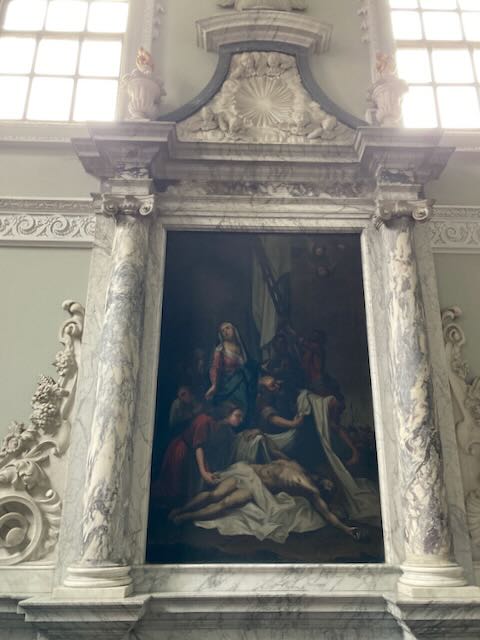



The chapel was soon afterwards left to the silence and stillness which reigned in it, with few interruptions, throughout the year.
The party now leaves the chapel. In this scene, Jane Austen has shown the moral bankruptcy of Mary and Henry Crawford, as well as Maria Bertram who clearly wants to marry Henry rather than her fiancé. For the Rushworth family, they are apathetic rather than actively irreligious. Only Fanny and Edmund, Austen’s heroine and hero, show that they are serious about religious faith. They are willing to speak up in the face of Mary’s fashionable disrespect for faith.
How do you show your faith when others are denigrating it? Do you think it can make a difference when you stand up for what you believe?
All photos in this post, © Brenda S. Cox, 2023.
Further Reading
Fashionable Goodness: Christianity in Jane Austen’s England (chapter 13, Churches, Chapels, Abbeys, and Cathedrals)
Jane Austen’s Rich(er) Leigh Family Connections at Adlestrop and Stoneleigh Abbey
Jane Austen’s Leigh Family: Stories Behind the Stories
Jane Austen’s Clergymen and Her Leigh Family
Visiting Stoneleigh Abbey (Rachel Dodge)
Cassandra Leigh Austen’s Stay at Stoneleigh Abbey (letter)
Jane Austen’s Mansfield Park and Stoneleigh Abbey
More pictures of Stoneleigh village, church, and abbey
Stoneleigh Abbey website
Jane Austen & Adlestrop: Her Other Family, by Victoria Huxley. US Amazon link
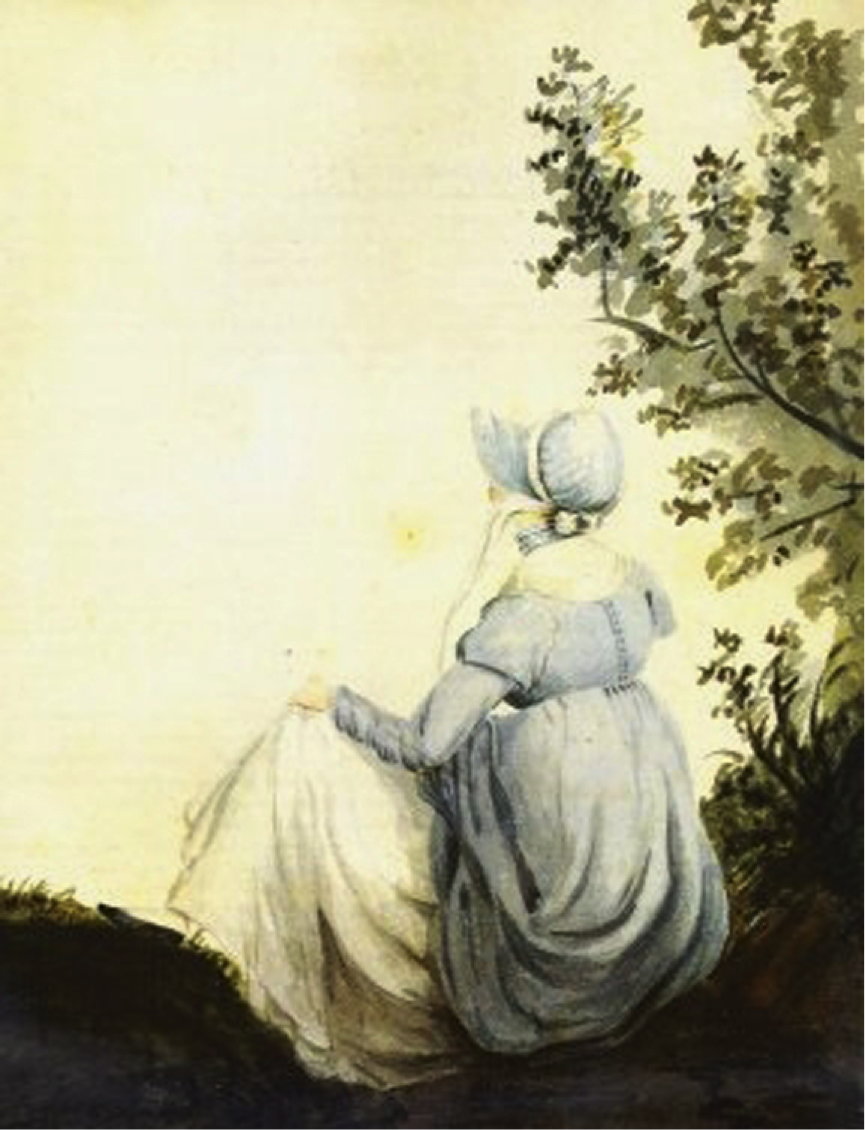

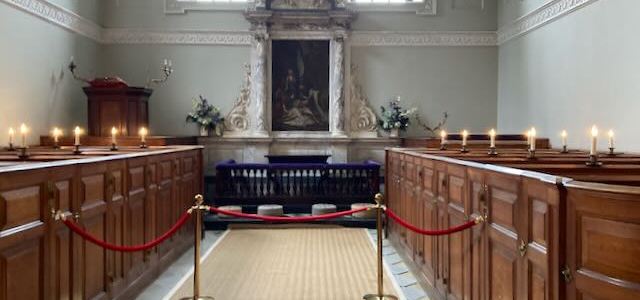
On what grounds do you claim that the organ was not there in the early 19th century? Books on organs indicate that the organ was made by John Crang, a notable London-based builder (of organs, harpsichords, etc.) in 1761, based on the inscription on the instrument itself. It may have been installed by a local supplier two years later, as a receipt suggests. The case design is unique in being directly copied from the work of William Kent.
LikeLike
Thanks so much! That’s what I understood, but I’m delighted to be proven wrong. Wonderful to think of Jane Austen hearing the same organ that is played there today! Here’s a lovely clip of the organ being played (with the theme from Dr. Who, which Jane Austen didn’t listen to :-). https://www.facebook.com/stoneleighabbey1/posts/the-beautiful-organ-on-the-chapel-balcony-its-simply-stunning-/2736293726624301/ (See comments for the link to the video.)
LikeLike